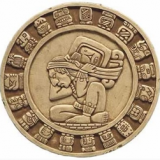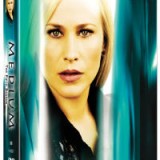Political Astrology: Making Sense of the Past and Forecasting the Future
Those who are new to the science of astrology might think that Michael O’Reilly’s book “Political Astrology” is beyond what they will be able to comprehend. There’s no denying that there’s a great deal of astrological scientific terminology to be found within its 223 pages. However, it’s balanced with practical, as well as interesting, information that beginning astrologists would probably benefit from learning sooner versus later in their journey to understanding what O’Reilly himself describes as “not only a field of knowledge, but a tool to study life itself.”
The book is a compilation of O’Reilly’s previously published articles from Dell Horoscope and his long-running internet NewsScope columns, along with some new words of wisdom thrown into the mix to tie it all together. Its primary focus is on discussing and demonstrating how the use of the Scorpio Rising United States national horoscope can significantly aid in making “meaningful forecasts, much like a meteorologist makes weather forecasts.”
Political Astrology is more “efficient” at “interpreting planetary cycles” than the popularly entertaining and familiar Sun Sign columns that litter newspapers and magazines. O’Reilly defines his approach as the “art/science of tracking and forecasting the most important economic, social, political, and cultural developments that shape a national psyche.” He does a thorough job of explaining both the historical background of this “branch” of Mundane Astrology and the long-running controversies that surround this method that has often been brushed aside in favor of the Gemini Rising approach.
As a beginning student of astrology, I have to admit to having no prior knowledge of Political Astrology until I saw the title of this book. I also have to admit to how impressed I was with how O’Reilly took such potentially complicated concepts of Fractual Astrology, the Complexity Theory, the “butterfly effect,” Astro*Carto*Graphy, and Relocation Astrology and made them understandable to those of us whose bookshelves aren’t yet lined with astrology books that span the centuries. O’Reilly can just as easily quote from Nicholas Campion’s 1988 “The Book of World Horoscopes” as well as he can explain how a horoscope can be drawn up for any entity that has a “birth moment,” whether the United States when the Declaration of Independence was signed on July 4th, 1776 or the first date of operation for a family-run business.
The book is nicely divided into three distinct sections. As expected, the first part of the book delves deep into the creation, interpretation, and relocation of the Scorpio Rising United States horoscope to various “power centers around the global village.” An insightful historical perspective on the cycles of war and presidential astrology is also included.
The second part of the book emphasizes what O’Reilly believes to be an often overlooked but extremely critical component of “basic horoscope analysis”–the four major asteroids known as Ceres, Juno, Pallas, and Vesta–“feminine archetypes [that] add tremendous depth and interpretive value when analyzing a horoscope.” O’Reilly concludes the section with a unique look into the role that Ceres and Juno play in the Kennedy Clan horoscope and its’ associated “tragedies and successes.”
The final part of the book contains reprints of O’Reilly’s NewsScope articles that were written from 2001 to as recent as May 9, 2005. Written under his pen name of WolfStar, it was this section that made me realize the full potential and applications of Political Astrology. As O’Reilly himself states, these articles “offer an astrological perspective of history as it unfolds.” “Newbie” astrologists, as well as seasoned professionals, will enjoy reading about such wide-ranging events as Martha Stewart’s downfall, Wal-Mart’s “Moon-Mar’s Dilemma,” the capture of Saddam Hussein, and the death of Pope John Paul II, all in an astrological connotation.
Michael O’Reilly’s “Political Astrology” is definitely a book to add to any serious astrologer’s reference library. Even though O’Reilly himself states, “beginners are urged to study the meaning of the planets in signs, houses, and in aspect to each other before plunging into Political Astrology,” this book actually does have something to offer all levels of astrologists. As he envisions a time “when astrologers are consistently seeing and describing events before they happen [and] the astrological community as a whole benefit[ting], as will the emerging global community,” the more who read this book, the sooner this goal might actually be reached.






